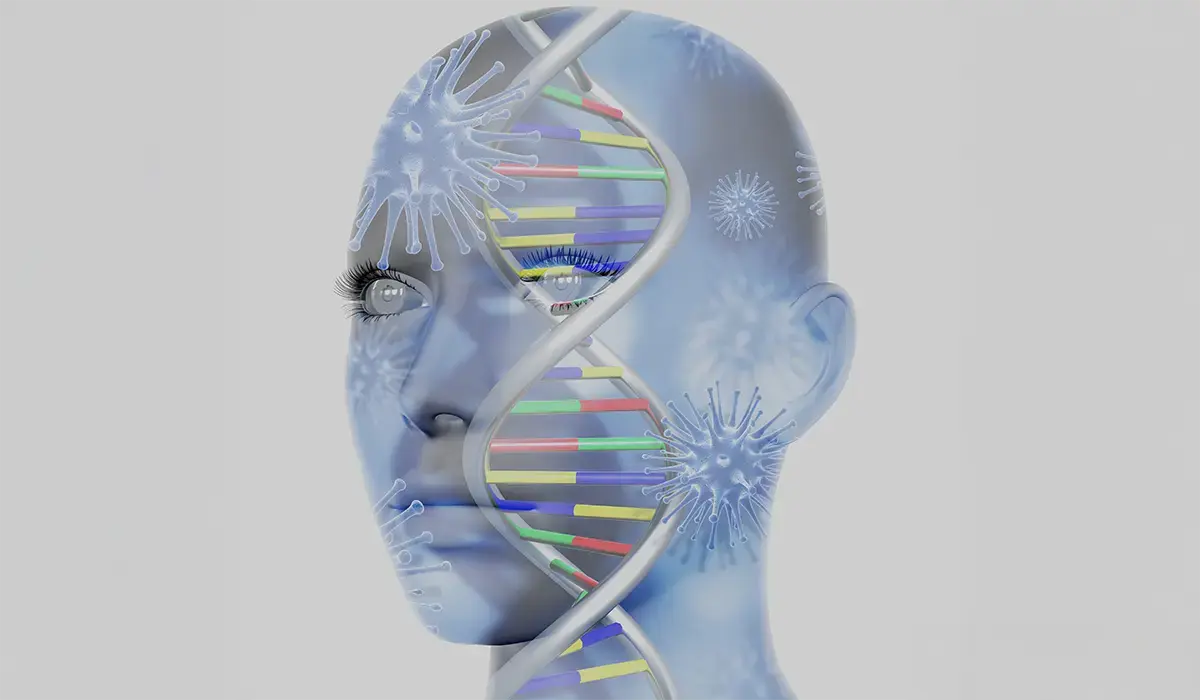
Regenerative Treatments and Exosome Applications
In addition to traditional treatments, recent developments in the field of regenerative (renewal) medicine have opened new horizons in chronic wound treatment. Methods such as ozone therapy, PRP (Platelet Rich Plasma) injections, hyperbaric oxygen therapy, and stem cell therapies are being tested in various chronic wounds, and positive results have been reported. One of these innovative approaches is exosome therapy.
Exosomes are microscopic vesicles secreted by cells in the body. Each exosome carries bioactive molecules, such as growth factors, proteins, and genetic material. When an exosome is secreted from a cell, it attaches to a target cell and sends “healing messages” to it. This way, exosomes act as a natural communication tool, stimulating cell regeneration and repair in damaged tissues. Studies have shown that exosome therapy can accelerate the healing of chronic wounds through various mechanisms. Here are a few examples of these mechanisms:
Reduction of Inflammation: Chronic wounds often experience constant inflammatory conditions, which hinder healing. Exosomes regulate the immune system, reducing unnecessary inflammation in the wound area. This creates a healthier wound environment, allowing the body’s repair mechanisms to work more efficiently.
Increased New Blood Vessel Formation (Angiogenesis): A healing wound needs fresh blood and oxygen. Exosome therapy stimulates the formation of new capillaries, ensuring more blood reaches the wound. Increased blood circulation boosts oxygen and nutrient support, aiding faster wound closure.
Supporting Collagen Production and Tissue Regeneration: Exosomes activate fibroblasts, cells that produce collagen, a protein that strengthens the skin. As a result, new tissue formation accelerates at the wound edges, leading to stronger wound closure and reducing the risk of excessive scarring.
Effect Against Microorganisms: Some scientific studies suggest that exosomes may have antibacterial properties, helping reduce bacterial load in the wound area. The reduction of infection risk is particularly beneficial in chronic wounds that are prone to infection, such as diabetic or pressure ulcers.
Thanks to all these effects, exosome therapy is considered a new hope for chronic wounds that do not heal due to conditions like diabetes, circulatory disorders, or infections. For example, chronic wound patients treated with exosome therapy have reported faster epithelialization (new skin formation), less inflammation, and a higher quality healing process. Exosomes can be injected directly into the wound edges or applied topically in some superficial wounds in the form of creams or solutions. Since exosomes are typically derived from the patient’s own cells or specially produced in the laboratory, the treatment is generally well tolerated with no serious side effects.
Conclusion and Recommendations for Patients

In summary: Chronic wounds are injuries that can arise due to various causes such as diabetes, vascular blockages, varicose veins, and pressure ulcers, and they are often difficult to heal. The treatment of these wounds requires both a cause-oriented approach (e.g., controlling blood sugar levels, improving circulation) and proper local wound care. Nowadays, in addition to traditional treatments, innovative methods such as exosomes have made it possible to speed up the healing process and achieve better results. Chronic wound care requires patience and expertise; however, when treated correctly, even the most stubborn wounds can heal or, at the very least, be controlled.
Remember: If you have a wound on your body that has not healed for a long time, never neglect it. A seemingly small problem can become serious due to the underlying cause. Consulting a specialist early will not only prevent the wound from getting infected but also minimize potential complications (such as the risk of amputation in diabetic foot patients).
Finally, we want to emphasize that while it is normal to feel hopeless when battling chronic wounds, medicine has made significant progress in this area. If you or your loved ones are suffering from a chronic wound, our clinic offers modern wound care methods and advanced treatments like exosomes. Take the first step today to regain your health and improve your quality of life—contact us and make an appointment with our expert team. Remember, with the right treatment and care, it is possible to overcome chronic wounds.
The supervision of an experienced healthcare professional in wound care makes a big difference in the healing of chronic wounds. If you have a persistent wound, take action by consulting a specialist to learn the most suitable treatment option.
Wound, Diabetic Foot Regenerative Medicine - Exosome FAQ
Why do chronic wounds heal slowly?
Diabetes, circulation disorders, infections, and inadequate dressing all complicate chronic wound healing. A multidisciplinary approach is required.
What is Regenerative Medicine?
Regenerative medicine includes treatments that promote the body’s self-repair of damaged tissues. PRP, stem cells, exosomes, and techniques like laser are part of this field.
What is PRP, and in which wounds is it used?
PRP (Platelet Rich Plasma) is a treatment where regenerative cells obtained from the patient’s own blood are applied to the wound. It is used in diabetic wounds, pressure ulcers, and surgical wounds.
What are exosomes, and what are they used for?
Exosomes are microscopic structures that enable communication between cells. Due to the growth factors they contain, they support tissue regeneration, particularly in wound healing and skin rejuvenation.
In which patients is exosome therapy used?
Exosome therapy can be applied in slowly healing chronic wounds, diabetic foot, vascular disorders, and aesthetic rejuvenation areas.
What is the difference between exosome and PRP?
PRP is obtained from the patient’s own blood, while exosomes are biologically active carriers obtained from cellular production systems. Exosomes carry biologically active signals with higher purity and concentration.
How often should wound care be performed?
The frequency of wound care should be planned based on the type of wound, its depth, and infection status, and should be done either daily or every other day. It should be controlled by a physician.
Which wounds are suitable for regenerative treatment?
Non-healing venous ulcers, diabetic wounds, pressure ulcers, and trauma-related tissue losses are suitable for regenerative treatments.
When is a non-healing wound at risk?
If a wound does not close after more than 4 weeks, or if it appears infected, has a foul odor, or black coloring, it requires advanced treatment. The wound should be evaluated by a wound care center or a specialist surgeon.
Is medication required in chronic wound treatment?
Yes, antibiotics can be prescribed, especially for infected wounds. For non-infected chronic wounds, medications that increase blood circulation and support tissue regeneration are preferred. Additionally, topical agents that reduce inflammation in the wound area are also chosen.
Which medications are used to reduce pain and inflammation in venous ulcers?
NSAIDs (e.g., ibuprofen, diclofenac) are used to reduce pain.
Short-term antibiotic treatment if necessary.
Topical enzymes and healing agents (e.g., hyaluronic acid, creams with silver).
Should be supported with bandaging.
What should I eat to accelerate chronic wound healing?
Protein: Eggs, yogurt, meat, fish (for tissue repair).
Vitamin C: Citrus fruits, peppers (increase collagen production).
Zinc: Pumpkin seeds, red meat.
Iron: Dark leafy vegetables, dry legumes.
Vitamins A and E: Carrots, almonds, olive oil.


